
It allows to keep PV going, with more focus towards AI, but keeping be one of the few truly independent places.
-
FSH + FH normal moving camera indoor.Look very good for me. Sorry, my english isn't good. Mark_the_Harp what film mode you used in Picnic at Horror Point ?
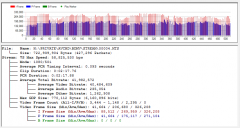
 FSH.PNG746 x 398 - 60K
FSH.PNG746 x 398 - 60K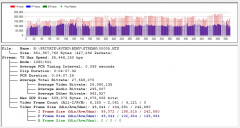
 SH.PNG746 x 398 - 59K
SH.PNG746 x 398 - 59K -
Hi @Rammstein
The video was shot in 24H using Standard film setting, -2, 0, 0, -2. I used a fixed shutter speed of 1/25-sec and a selection of apertures and ISOs (between 160 and 1250 ISO). We were there about 30 minutes, but even so the light was fading a bit at the end of the shoot hence the high ISO.
I was pretty careful with exposure so I didn't need to adjust too much in post. However, all the shots were given a bit of "curves" tweaking (but not that much).
The only shots which had more than that were the strange colour ones (in the bushes) which were done with MB looks, and the shot of Kiera against the sky betwen 1.12 and 1.15. In the original of this shot, the sky was bleached out and a strong white colour, so I keyed out the sky and put in a subtle pale blue gradient in its place.
Where the eggs animate in, I built up a sequence in reverse. I did this because it's very difficult to add objects and not disturb the ones already there. So we made an arrangement of eggs and ran the camera, then took them away one by one and then reversed the sequence of individual shots to animate them appearing.
One bit of learning for me: I did the text in a graphics editor, complete with drop shadows, and then imported them as pngs. I realise now I should have blurred them a bit, as the white text alises quite badly.
I'm very pleased with it, though, considering we had our bag of eggs but planned the rest of it on the walk to the location!
-
@balazer or whomever wants to chime in. What Film setting do you prefer or are you seeing the most dynamic range with Cake? I see most use a wide array with different hacks, just wanted to know your thoughts about with Cake. Thanks
-
Hey everyone, I just loaded Cake 2.2 today to test it and had a weird recording error. I shot 1st for about 3mins, then 12 secs and finally for around 2mins. I wasn't able to record another time. The camera just wouldn't record anymore. I used a SDXC 95MB/sec, shot in HBR 25p @ f2, shutter 50 and iso 1000. Standard -2-1-2-2. Anyone had the same problem?
EDIT: found the thread about the card. Sorry!
-
Thread about what card? Did you fix your problem? Try menu, setup, reset. Try a different card. Sounds like a bad card to me.
smontoto, dynamic range won't be altered by these encoder settings. You can shoot with whatever film mode settings you want.
-
I was playing with StreamParser and some footage from Cake 2.2 when I ran into the following stream "behavior": http://cl.ly/0b2X1y113z2S323l1y1B
I've got a sandisk extreme [NON-pro] 45mb/s card (the one that replaced the extreme video HD 30mb/s card) and the footage was about some foliage moved by the wind (a quite gentle wind, not strong...).
24H, ex-tele on, 160iso, camera on tripod, panny 20/1.7 pancake.
Is it ok?
-
...mmm... I've read the previous posts about the issue reported by Rammstein. Maybe what I saw in StreamParser has been caused by the the AF. Maybe...
-
This prompted me to examine some of my footage with stream parser and I get the cadence problem too in 24H, sometimes, with cake 2.1, this was shot with legacy glass so no AF. I haven't tried v2.2 yet.
-
@balazer made a test by coincidence on 16GB Lexar professional (slow older card, which I used for loading the patch) and recorded 50 minutes in HBR. That spanned perfectly, I really liked the quality. Thanks a lot balazer.
-
It is normal to see ups and downs of the frame sizes. That is the encoder's rate control adjusting the quantizer setting to keep the bit rate in range. Whether or not an uneven pattern of frame sizes is really a problem depends on what quantizer settings the encoder is using for the frames. As long as the small frames aren't too low in quality, it is fine. Have you looked at the video? The video can appear perfectly normal even with this kind of unevenness in the frame sizes. Occasionally on a very high detail, low motion scene the frames get too big, and the encoder is forced to lower the size of subsequent frames more than you'd like. It is a consequence of having short GOPs, a high maximum bit rate setting, and a low minimum quantizer setting. But am not going to change those things just to get a little more even bit rate in those kinds of scenes, because that would reduce the quality of more common scenes. If you want to tune the settings to better handle that particular kind of scene, raise the quantizer setting in PTool to 20 or 22.
Attached is an example of uneven frame sizes in 24H. That unevenness looks bad in Stream Parser, but there's not a thing wrong with the video. The quantization parameters are not too high, and the video looks great. What matters here is that the small frames are good quality, and they are. Don't let the relatively large size of the large frames throw you off. Those frames are huge. If anything, the problem is that the big frames are too big, and hitting the frame limit. This would be fixed by raising the minimum quantizer setting, but again, at the expense of quality in more common scenes.
Thanks for the feedback, gameb. Glad it's working well for you.
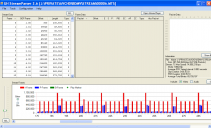
 uneven_frame_sizes.png1152 x 698 - 26K
uneven_frame_sizes.png1152 x 698 - 26K -
@balazer Hi, thanks for your effort and diligence. I'm not sure I completely agree about IQ not being affect when the cadence is hatched. I've watched a couple of those sequences carefully and it looks likes fine detail get softened when it happens. It seems to degrade the IQ slightly, to my eyes anyway.
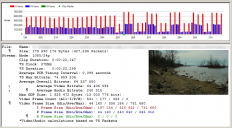
 cake21-24H_cadence.PNG746 x 412 - 145K
cake21-24H_cadence.PNG746 x 412 - 145K -
I can't say anything more about what you've shot without a more detailed analysis. You are welcome to raise the quantizer setting, to tune the settings more to that kind of scene.
-
I'm not good at pixel-peeping but I haven't noted any significant decrease in quality.
I just reported it thinking it might interest you. Good to know you were already aware of it and that, usually, it's not an issue :-) -
@balazer cake 2.2 spans also on GF2 FSH Sandisk 32GB Extreme - great patch for that little camera!
-
The "cadence" phenomenon nearly always happens as a consequence of the codec using fallback quantization scaling matrices. With P and B frames there are basically three things going on: There are "delta" macroblocks where the current macroblock is represented as a change (or delta) from another frame's (I or P frame) macroblock in the same location. There are "motion vectors" where the current macroblock is a delta based on a macroblock from another frame's macroblock shifted left/right/up/down. Finally, there are "stand alone" macroblocks coded in the same way as I frame macroblocks. In the case of motion vectors there is also data that represents small changes that need to be applied to the macroblock to maintain fidelity - so motion vectors are also combined with delta values.
This means several things. When fallback matrices are used (i.e. when frame size falls to a very small value), changes between current macroblocks and their reference macroblocks are crudely (very crudely) encoded. With static scenes you would probably not see the difference because the subject isn't changing. Even with dynamic scenes where lighting etc... doesn't change it might be hard to see a difference if things are moving but not changing otherwise (like with a slow pan across a static scene). However, if a scene is moving, and lighting qualities are also changing dynamically, the results could be very bad indeed.
The bottom line is that when these cadence issues come up the codec's ability to faithfully reproduce changes from frame to frame is seriously compromised. Now, with certain scenes that might not be so visible; but don't kid yourself - the codec is significantly crippled. It seems to me that the purpose of hacks is to get the best codec performance possible. When it operates in a mode that is known to seriously undermine fidelity, that seems contrary to the purpose of hacking in the first place.
It's easy to detect this by running the JM-SP decoder in StreamParser. It places an asterisk next to each frame (QST-High column) that has been encoded with fallback matrices. Another thing that can happen is that lots of macroblocks may be skipped (also shown by the JM-SP decoder) - which is also bad because that means that no changes whatsoever are being encoded. Remember, though, that you have to create an elementary stream file (under "Tools") before you can run the JM-SP decoder (also under "Tools").
Chris
-
Thanks for the info, Chris. It seems I have some work to do to fix this.
-
@balazer I have a documentary shoot after tomorrow, I shoot in 24P, would that be a problem, sorry I just don't get the problem?
-
Shot with Cake 2.1 using the 300% VMM and 720p60 (SH).
-
Chris was right. The encoder was going into fallback mode in 24H in some highly detailed scenes. Other modes are fine. I had simply not set the bit rate correctly in 24H. It's an embarrassing mistake, especially since I've done this hundreds of times across the different modes. I'll post an update tomorrow after I get my sun back.
Edit: I'm still working on this. Getting the settings to not go into fallback mode was easy enough. Now I'm trying to boost the average bit rate and get it closer to the max bit rate.
-
An embarrassing mistake is 2+2=3, the one you made is just a human mistake...
-
@balazer - "Now I'm trying to boost the average bit rate and get it closer to the max bit rate" - this means i have to change my memory card? Remember "reliability and spanning".My bad samsung memory card is not even class 10 . Class 10 is at least 10 MB/s write speed . "Up to 24 MB/s read speed and 13 MB/s write speed" say in advertising but in reality is 18 MB/s read speed and 9.5MB/s write speed .And like me there are many. http://www.amazon.com/Samsung-Flash-Memory-Brushed-Metal/dp/B005TUQU00/ref=sr_1_1?s=electronics&ie=UTF8&qid=1334719200&sr=1-1
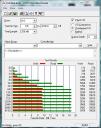
 Capture.JPG480 x 611 - 81K
Capture.JPG480 x 611 - 81K -
No, I wasn't going to change the reliability or memory card requirements. The way the settings are working, a high detail, low motion scene will generate sustained bit rates of around 67 Mbps. But if you pick the camera up and move it around, the bit rate drops to around 40 Mbps, even though the encoder could still be using less quantization (to make higher quality and higher bit rates). I wanted to find a way to boost the average bit rate while keeping the max bit rate the same. But I couldn't find a way to do it, without resorting to frame limits or fallback mode. So instead I will keep things much the same as they've been, with the same max bit rate and the same card compatibility, except correcting the problem of 24H sometimes going into fallback mode for some high detail, low motion scenes. I will post settings tomorrow after one more round of tests.
-
Cake 2.x ALREADY requires SanDisk Extreme Class 10 cards for maximum reliability.
If we all start asking for @balazer to tweak Cake for our specific card (Samsung, Transcendent, Delkin, Kingston, Ultima, etc. etc.) we will drive him mad :-)
Think about the time he spent, and still spends, for Cake... Isn't it worth more than 40$ for a new card? We are lucky to have such a deal.
-
In general the minimum class 10 should be used, so why go below class 10 anyway ?
-
@feha Samsung 32gb "white" cards are class 10, but their performance is poor.
Howdy, Stranger!
It looks like you're new here. If you want to get involved, click one of these buttons!
Categories
- Topics List23,993
- Blog5,725
- General and News1,354
- Hacks and Patches1,153
- ↳ Top Settings33
- ↳ Beginners256
- ↳ Archives402
- ↳ Hacks News and Development56
- Cameras2,368
- ↳ Panasonic995
- ↳ Canon118
- ↳ Sony156
- ↳ Nikon96
- ↳ Pentax and Samsung70
- ↳ Olympus and Fujifilm102
- ↳ Compacts and Camcorders300
- ↳ Smartphones for video97
- ↳ Pro Video Cameras191
- ↳ BlackMagic and other raw cameras116
- Skill1,960
- ↳ Business and distribution66
- ↳ Preparation, scripts and legal38
- ↳ Art149
- ↳ Import, Convert, Exporting291
- ↳ Editors191
- ↳ Effects and stunts115
- ↳ Color grading197
- ↳ Sound and Music280
- ↳ Lighting96
- ↳ Software and storage tips266
- Gear5,420
- ↳ Filters, Adapters, Matte boxes344
- ↳ Lenses1,582
- ↳ Follow focus and gears93
- ↳ Sound499
- ↳ Lighting gear314
- ↳ Camera movement230
- ↳ Gimbals and copters302
- ↳ Rigs and related stuff273
- ↳ Power solutions83
- ↳ Monitors and viewfinders340
- ↳ Tripods and fluid heads139
- ↳ Storage286
- ↳ Computers and studio gear560
- ↳ VR and 3D248
- Showcase1,859
- Marketplace2,834
- Offtopic1,320







